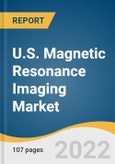Only 30 institutes in the U.S. have installed 7.0T MRI systems that affirm its ability to produce high quality neuroimages. GE Healthcare received FDA clearance for its 7.0T MRI scanners to produce clear and accurate images of brain and joint micro-vasculature to detect various neurological disorders such as Alzheimer’s disease and mild traumatic brain injury. Additionally, these novel systems are the platforms for imaging of the knee and cartilage.
Further, these systems showed promising results in the detection of neurological conditions of the patients post COVID-19. Thus, these techniques improve patient satisfaction, eases radiologist’s workflow, and reduced rescan frequencies. Additionally, researchers in the University of Minnesota are developing ultra-high field scanners up to 20 T for the operation on human imaging. Such research activities create market growth opportunities in the coming years.
The outbreak of COVID-19 led to a decline in the research activities, closure of universities along with academic institutions, and decline in clinical trial activities. The fear of virus spread also declined any diagnostic or surgical activities at the end-use settings. Economic crunch at hospitals, diagnostic centers or clinics, led to the reduced adoption of systems used for the diagnosis. Thus, the pandemic led to a decline in the market during 2020.
U.S. Magnetic Resonance Imaging Market Report Highlights
- The open system is anticipated to be the fastest-growing segment during the forecast period
- MRI for neurological and brain disorders dominated the market largely due to the growing number of neurological condition and increased geriatric population
- The high-field MRI segment is expected to experience the fastest growth largely due to its efficiency to provide detailed images for the diagnosis
- Imaging centers are expected to exhibit the highest growth rate during the forecast period
Table of Contents
Companies Mentioned
- GE Healthcare
- Siemens AG
- Toshiba Corporation
- Aurora Imaging Technologies, Inc
- Koninklijke Philips N.V.
- Esaote SPA
- Sanrad Medical Systems Pvt Ltd
- Fujifilm








